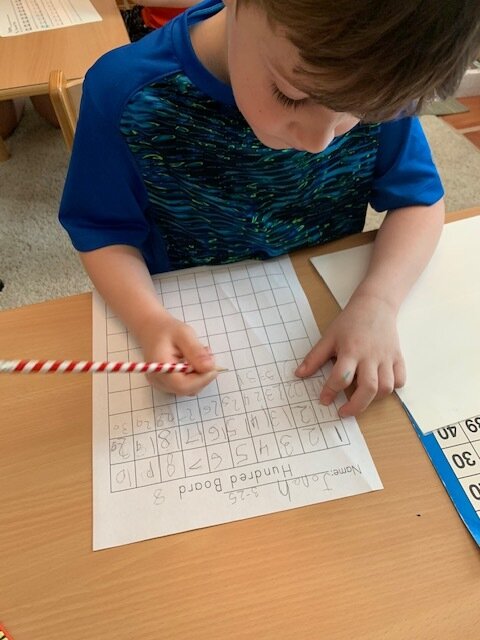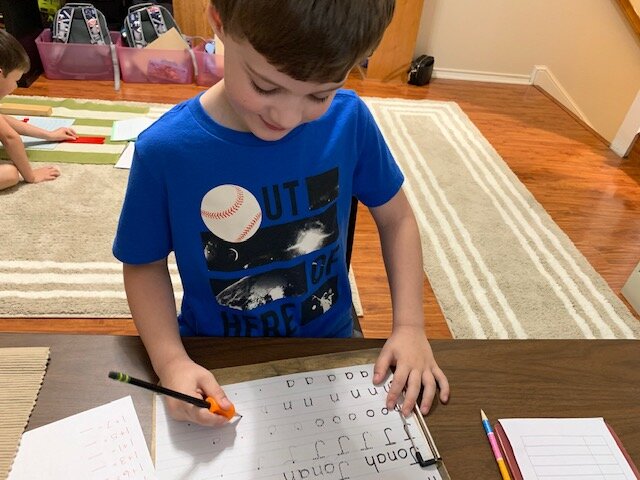When working with children, I believe it is important to be able to create a learning environment, whether at home or in a classroom, that encourages repetition and consistency. Without repetition of works and lessons children and adults will not fully “absorb” new information, reasoning abilities or motor skills. Think of a musician who has weekly music lessons with an instructor. Unless the student “practices or repeats” the information shared during the lesson their ability to play or perform music is stifled. They never get to the point of being able to perform. The student must practice the skills and music presented in the lesson in order to master them. It is the same with learning in almost all areas. A lesson is given and the information should be “practiced,” in order to obtain mastery. So what halts the child’s interest in a particular work? Why does he/she become bored? Why is there so little repetition? Part of the answer may lay in the fact that teachers do not know variations with the materials beyond the first initial presentation. Perhaps the adults themselves have lost the “excitement and love,” for the work they present.
One area that I have witnessed and feel that is neglected is correct formation of letters for writing. As I watch children write their names, it is rare to see a child who has correctly formed every letter of their name. Why is that? One possible answer is that children have not been shown or they are not been supervised in the “repetition,” or practice of writing. They begin practicing incorrect writing habits such as: incorrect pencil grasp & letter formation. Once a child is allowed to continually practice incorrect letter formation or pencil grasp without any attempt to assist the child in the correct formation then writing may become unreadable and sloppy. It is very hard to change any bad habit, but poor penmanship habits can be re-directed and corrected with supervised repetition! Recently, I have been working with some children who had poor construction of letters, but all of that changed in about three weeks with daily letter formation practice. We did our best to make it fun! Writing in the air, writing on chalkboards, wipe off boards with various colored markers, print practice sheets that are dotted and this week, sandpaper letters and writing in a sand tray. The result has been amazing. Repetition is important but so is consistency. When the child incorrectly formed a letter, the adult sat down beside the child and gave another presentation of the correct formation of the letter. The consistency was that it was done daily, the same letters until formation was mastered before moving onto the next group of letters.
I intently watched one morning as a little four-year old continued to practice writing the letter, “w,” on a wipe off board. Usually, they do only 4 of the letter, but this child kept writing until an entire line of the letter was reproduced. He was completely engrossed in his work and proud of himself.
Montessori stated, “ ..when the child goes on repeating the same exercise again and again for sheer love of it. When I have been just introduced to a person and I find him interesting and attractive, that is not the moment when I turn my back on him and go away!! Rather it is just then that I have the wish to stay in his company and enjoy it.” (Maria Montessori, E.M. Standing, Her Life and Her Work) When we demonstrate a lesson, our first thought should not be to hurry off to the next child but to stay with the child, “in the moment!”
The terms consistency and repetition can refer to many areas of the classroom, such as the simple everyday mechanics of the classroom. Have you found chairs not pushed in, rugs and mats not rolled up neatly, works put away is disarray? All of these are signs of inconsistency of the adults in the environment not having the children repeat how to do the mechanics until they become habitual.
Next time you begin seeing problems in your classroom, whether it be children not adhering to the guidelines of the classroom, or incorrect letter or number formation, works not being used as intended, look at yourself and ask, “Am I being consistent? Do the children learn and absorb lessons through repetition in my classroom? Do I use variations to create interest and repetition?” It sounds a little simple but being CONSISTENT and encouraging REPETITION can pay big benefits to the children in your care.





